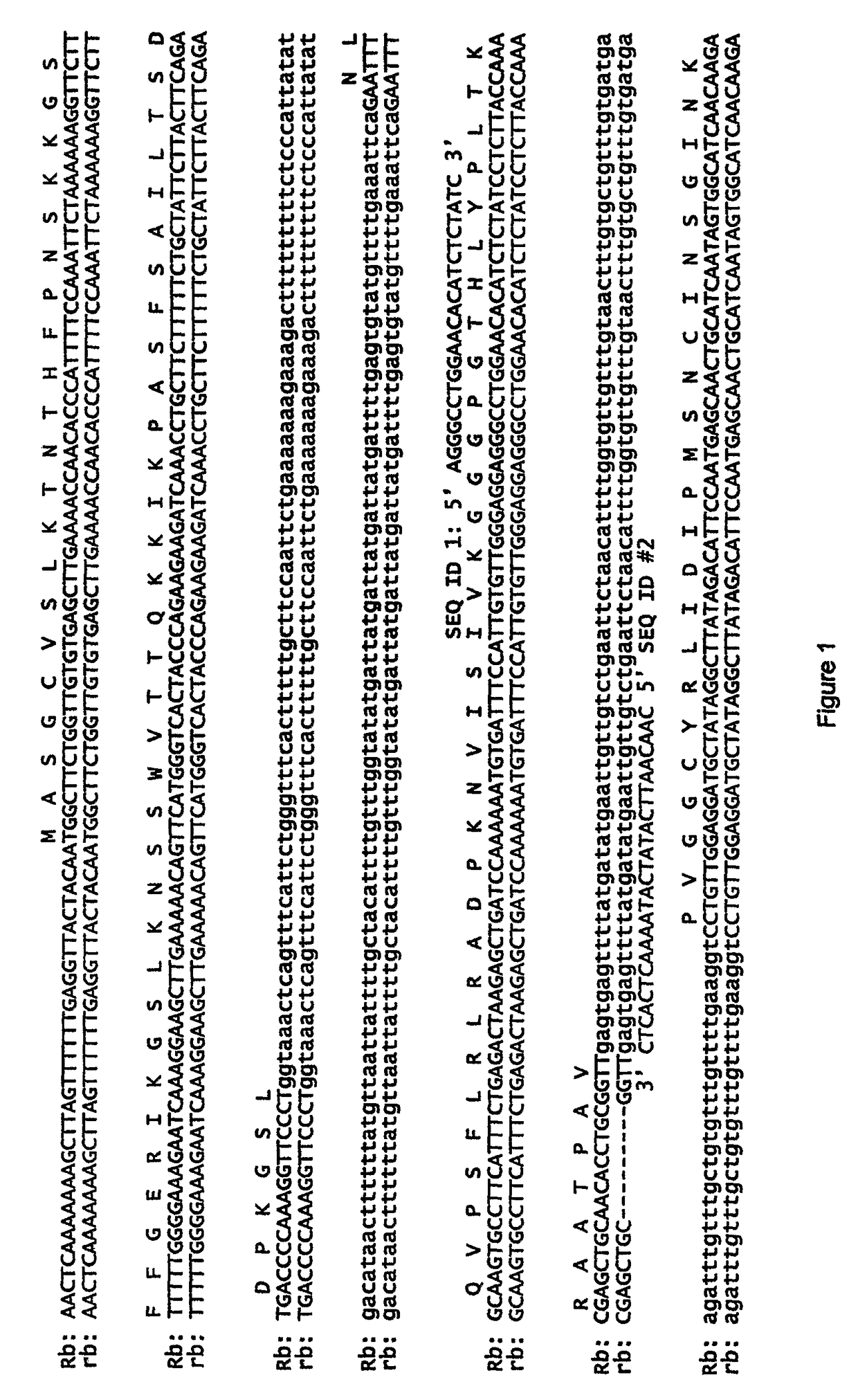Slow-maturing, determinate peas
a technology of determinate peas and slow-maturing, which is applied in the field of slow-maturing, determinate pea plants, can solve the problems of short harvest window of immature and still sweet peas, sweeter peas, and more rapid maturation of peas, and achieve good horticultural traits
- Summary
- Abstract
- Description
- Claims
- Application Information
AI Technical Summary
Benefits of technology
Problems solved by technology
Method used
Image
Examples
example 1
Development of Double Wrinkled, Determinate, Dark Green Lines
[0101]In an effort to focus on the segregation of the det and Pa alleles, determinate light green peas of line B387-426 were crossed with R87 223. B387-426, genotype Pa det r / Pa det r, Rb / Rb, is a germplasm release obtained in 1988 from the late Gerald A. Marx, of the Geneva Experiment Station of Cornell University. R87 223 is a productive mid-season, indeterminate dark green breeding line, genotype pa Det r / pa Det r, Rb / Rb.
[0102]Since the r and rb alleles are fixed in the F1 generation, this cross focused on the segregation of the Pa and det alleles, however, in the process of selection from this cross it was observed that the determinate characteristic consistently co-segregated with light green color; no recombinants having a determinate trait combined with dark green seed color were observed, confirming reports that the det and pa loci are tightly linked.
[0103]Many of the selections from this cross were also discarded ...
example 2
Method for Identifying the rb Genotype Using the Marker Using a Molecular Marker Assay
[0111]This method has two steps. The first step is to isolate DNA from the pea plant as the substrate for the molecular marker assay in the second step. Isolation of Pea DNA for marker tests.
[0112]The following protocol can be used to extract pea DNA for subsequent molecular marker testing. Those skilled in the art will recognize that many DNA extraction protocols are available. All chemicals described in the protocol can be obtained from Sigma Chemical Company, Saint Louis, Mo. The procedure involves the following steps:
[0113]1. Collect a plant part that is approximately the size of a well in the 96 well microtiter plate format. Preferably, either a seed sample is used, or a tissue sample is taken from young leaves.
[0114]2. Add 150 μl extraction buffer (200 mM Tris-HCl, pH 7.5; 250 mM NaCl; 25 mM EDTA; 0.5% SDS) to the sample and macerate the tissue.
[0115]3. Centrifuge the plate for 15 minutes at ...
example 3
Sucrose Analysis of Peas
[0130]Plots were harvested on multiple days, and at each harvest the accumulated heat units and tenderometer values were recorded. The accumulated heat unit for each plot at 100 tenderometer was calculated by linear regression.
[0131]Samples from the Pisum sativum varieties or lines are stored in cans until extracted. Peas are sub-sampled and weighed out on a Mettler AT200 analytical balance. Absolute ethanol is added to the sub-sample (4:1 ratio, volume / weight). The sample is cooled and stored overnight (at −20.degree. C.) then ground with an IKA Ultra Turrax T25 homogenizer. The homogenate is returned to the freezer. The following day, the sample is mixed, then centrifuged to clarify the extract. An aliquot is removed and scaled in an auto-sampler vial and sealed in an auto-sampler vial and stored at −20.degree. C. until analyzed.
[0132]The sugars are separated on a Hewlett-Packard 1050 HPLC chemstation system, employing a refractive index detector. The colum...
PUM
| Property | Measurement | Unit |
|---|---|---|
| pH | aaaaa | aaaaa |
| volume | aaaaa | aaaaa |
| volume | aaaaa | aaaaa |
Abstract
Description
Claims
Application Information
 Login to View More
Login to View More - R&D
- Intellectual Property
- Life Sciences
- Materials
- Tech Scout
- Unparalleled Data Quality
- Higher Quality Content
- 60% Fewer Hallucinations
Browse by: Latest US Patents, China's latest patents, Technical Efficacy Thesaurus, Application Domain, Technology Topic, Popular Technical Reports.
© 2025 PatSnap. All rights reserved.Legal|Privacy policy|Modern Slavery Act Transparency Statement|Sitemap|About US| Contact US: help@patsnap.com


